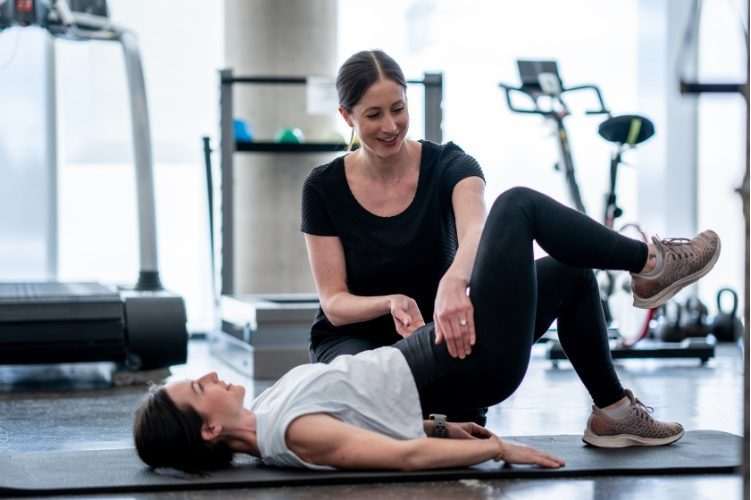Biofeedback, wands, and pelvic trainers can enhance your at-home pelvic floor therapy plan.
Short answer: Yes — but only if they’re used smart.
If you’ve been doing pelvic floor physio and wondering:
- “Should I be using one of those gadgets I saw on Instagram?”
- “Is there a device to help me track my progress?”
- “Are vaginal weights or biofeedback tools actually worth it?”
Here’s the lowdown:
There are tools that can help — but only if:
- You’re using them correctly
- You’re at the right stage of rehab
- You’re not using them to replace actual muscle control or awareness
- You’ve been properly assessed by a trained pelvic physio
✅ 1. Biofeedback Devices
Great for improving awareness + real-time feedback
These devices measure how well your pelvic floor is contracting or relaxing — either through internal sensors (vaginal or rectal) or surface sensors placed externally.
Some are used in clinic (we use them at YFS for deeper assessments), and others are available for home use.
Popular features include:
- Visual feedback on a screen
- Guided contractions and relaxation cues
- App-connected progress tracking
Best for: People who struggle to “feel” if they’re doing their exercises correctly, or who need neuromuscular re-education.
✅ 2. Pelvic Floor Trainers / Smart Devices
The FitBits of the pelvic health world.
These are app-connected devices that give you a workout program, track your contraction strength, and gamify your progress. Think: “Kegels meets Duolingo.”
Some even offer pressure sensors to help you avoid over-tightening or poor technique.
Important: Just because a device says “stronger contractions” doesn’t mean it’s doing the right thing for your body. Some people need more relaxation or coordination, not strength.
Best for: Motivated users with solid physio guidance and a goal of progressing home programming.
✅ 3. Vaginal Weights / Cones
Think resistance training for your pelvic floor — when appropriate.
These small, graded weights are inserted vaginally and held in place using pelvic floor contraction. They can help build endurance and strength after you’ve built proper technique.
Best for: Postpartum rehab or clients who need a physical load challenge — but not appropriate for everyone (e.g., prolapse or pain symptoms).
✅ 4. Dilators
Used more for relaxation and desensitization than “strength.”
Dilators are tools designed to gently stretch and retrain tight or painful pelvic floor muscles, especially in cases of:
- Painful intercourse
- Vaginismus
- Post-surgical scarring
- Trans-affirming care or hormone-related tissue changes
They come in various sizes and are used gradually with breathwork, nervous system regulation, and guided touch.
Best for: Clients dealing with pain, tightness, fear, or avoidance — not for “tightening” or toning.
✅ 5. TENS or NMES Devices
TENS = pain relief; NMES = neuromuscular retraining
- TENS uses mild electrical pulses to block pain signals and calm the nervous system
- NMES helps activate weak pelvic floor muscles when voluntary control is low
These are often used in-clinic first, and then at home with proper instruction.
Best for: Post-surgical recovery, neurological conditions, or early-stage pelvic floor dysfunction.
⚠️ Tools Alone Won’t Fix It
No matter how cool the app is or how sleek the packaging looks — a device won’t:
- Fix coordination problems
- Rebuild breath-pelvic floor synergy
- Assess your posture, habits, or load management
- Treat pain, prolapse, or movement dysfunction on its own
👉 Tools are just that — tools. They work best as part of a full strategy, not in isolation.
Final Word: Know Your Body First. Then Choose Tools That Match It.
At YFS, we help clients understand:
- What their pelvic floor actually needs (relaxation? strength? control?)
- Whether a tool will help or hinder progress
- When it’s time to add one — and how to use it correctly
No gimmicks. No shame. Just real recovery, built the smart way.
Not sure what your pelvic floor needs right now?
Book an assessment at YFS Toronto. We’ll walk you through exactly what’s going on — and what tools (if any) can support your progress.




